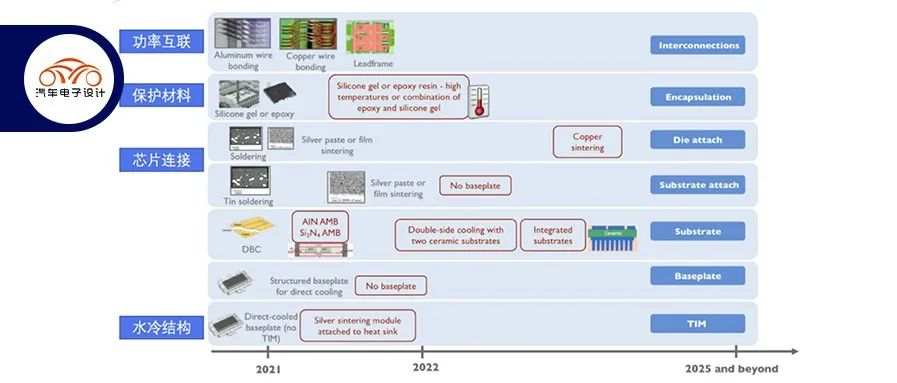Author: Zhu Yulong
In recent supply of 800V models, Hyundai dealers have received requests for IONIQ 5 from Hyundai, which may take more than 12 months to deliver (due to semiconductor shortages, delivery times may be longer). According to Business Korea, the problem lies with the chip supplied by Infineon, and production of IONIQ 5 may be interrupted. The report states that a defect was discovered in SiC chips produced by Infineon between early April and early June 2022, resulting in low yield, and Hyundai is negotiating with Infineon to prevent production line interruption. The car manufacturer is seeking to purchase SiC chips from STMicroelectronics as a replacement for the SiC inverter.
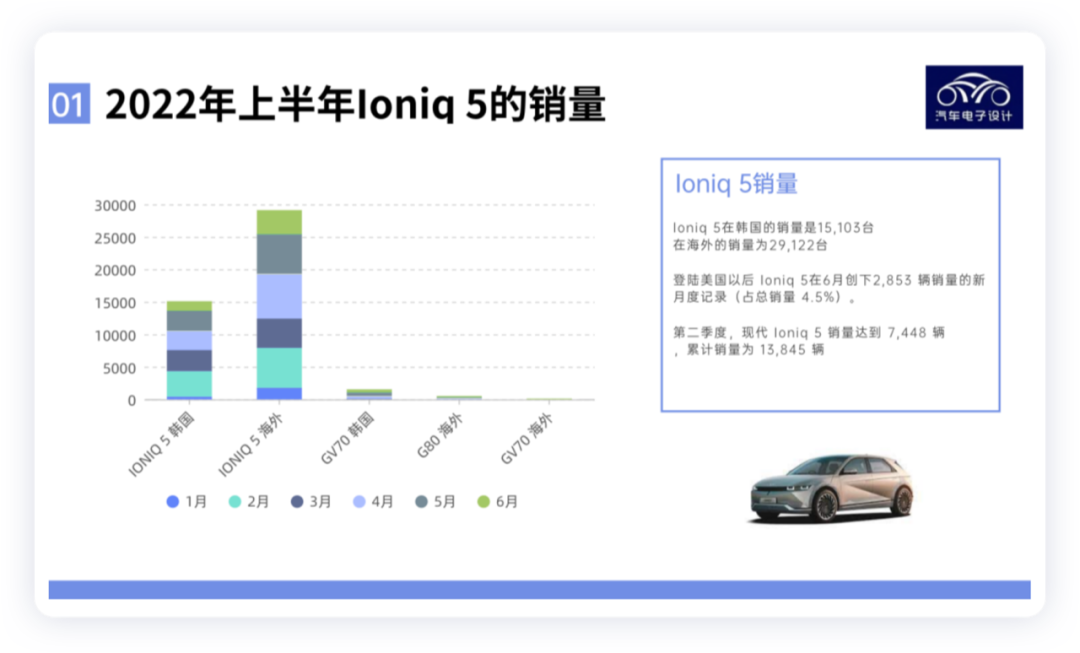
In response, Infineon stated that a deviation occurred during production at a front-end manufacturing plant this spring, but the impact on total output was limited. “Because we have strict quality control standards and processes, affected products have not been shipped to customers. Ensuring the highest product quality is our top priority.” Infineon explained that the issue has been resolved and production has since increased, with current production exceeding the original planned volume. “Affected customers have been informed, and we cannot comment further on specific customer topics.”
I think this incident reflects a few things:
-
Even with SiC products that produced more than 100,000 units last year, defects can still occur. Keep in mind that Infineon was awarded “2021 Annual Partner” “Supply Capacity Special Award” by the Hyundai Motor Group (HMG). By providing the HybridPACK CoolSiC Drive, a power module based on silicon carbide (SiC), Infineon demonstrated its product quality and ability to respond to new requirements.
-
From the current situation, the supply of 800V SiC products is highly concentrated, and the current market share is still highly concentrated. Let’s do some sorting based on the current situation.
IONIQ 5 Drive SystemThe E-GMP platform, which is currently being promoted by Hyundai Motors, uses silicon carbide (SiC) modules in the main inverter power device. This system achieves an efficiency improvement of 2% to 3% and increases the vehicle’s driving range by approximately 5%. The main player in this event is the SiC module of the HybridPACK CoolSiC Drive. This module can achieve a 1200V level 250kW drive and has two versions of chip quantities (rated currents of 400A or 200A). The SiC version adopts the module size of the EDT2 technology which uses Si-based materials (first launched in 2017), providing a scalable power range of 100-180 kW at 750V and 1200V levels. The CoolSiC module using silicon carbide trench MOSFET structure began shipping in June 2021.
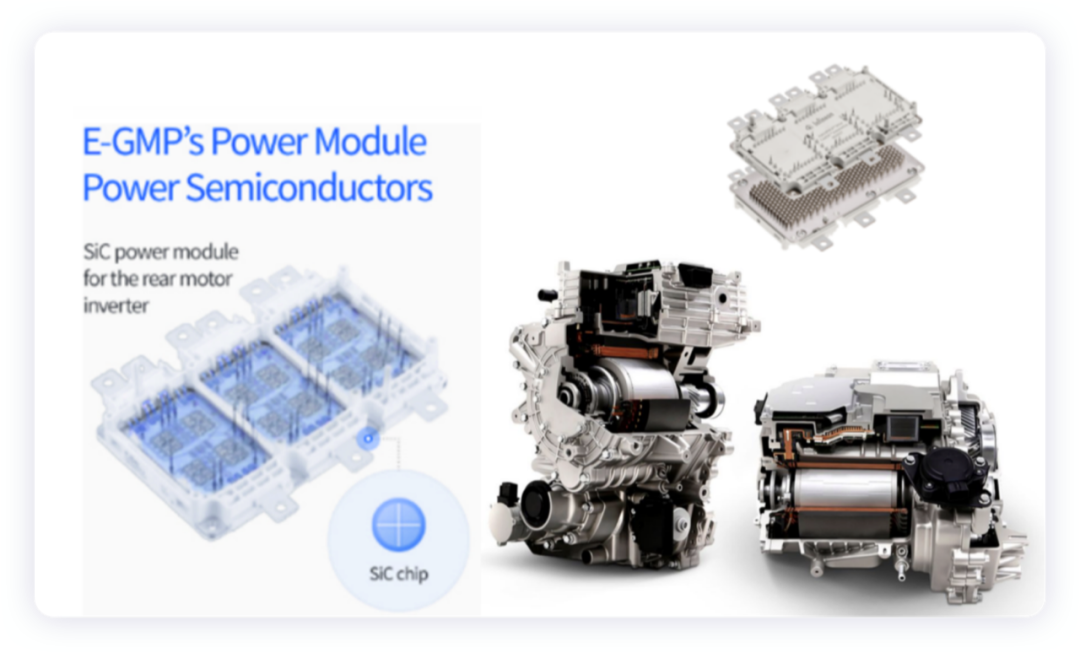
The basic information of this inverter is as follows from the recent teardown, and I will summarize more once further information is disclosed.
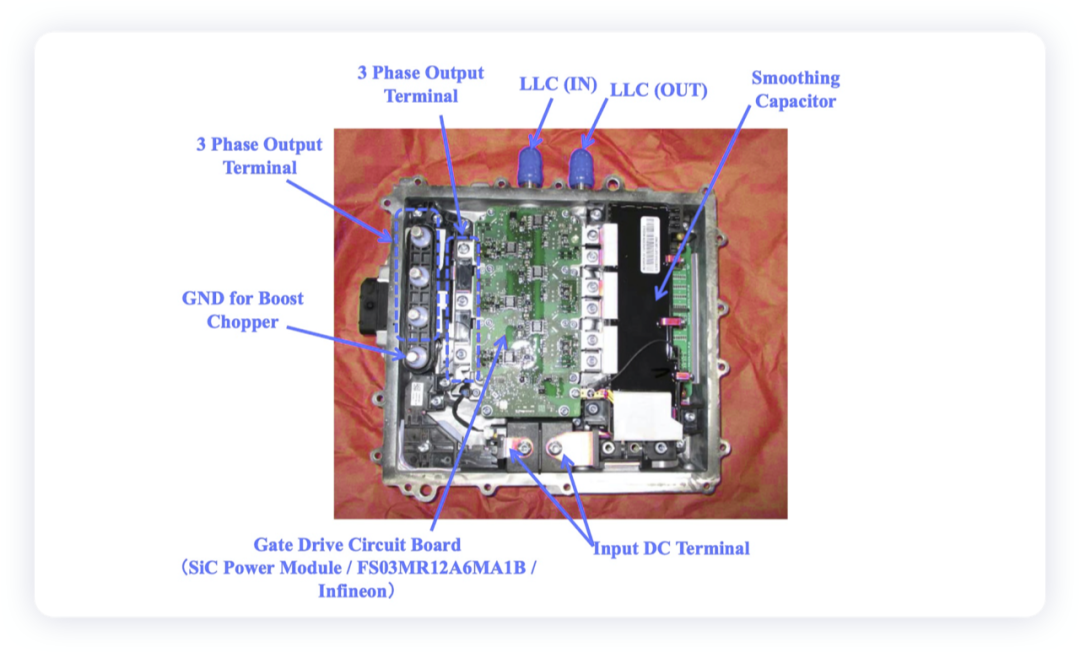
SiC Module
Since its launch, Infineon’s HPD module has become the mainstream product for electric vehicle power modules.
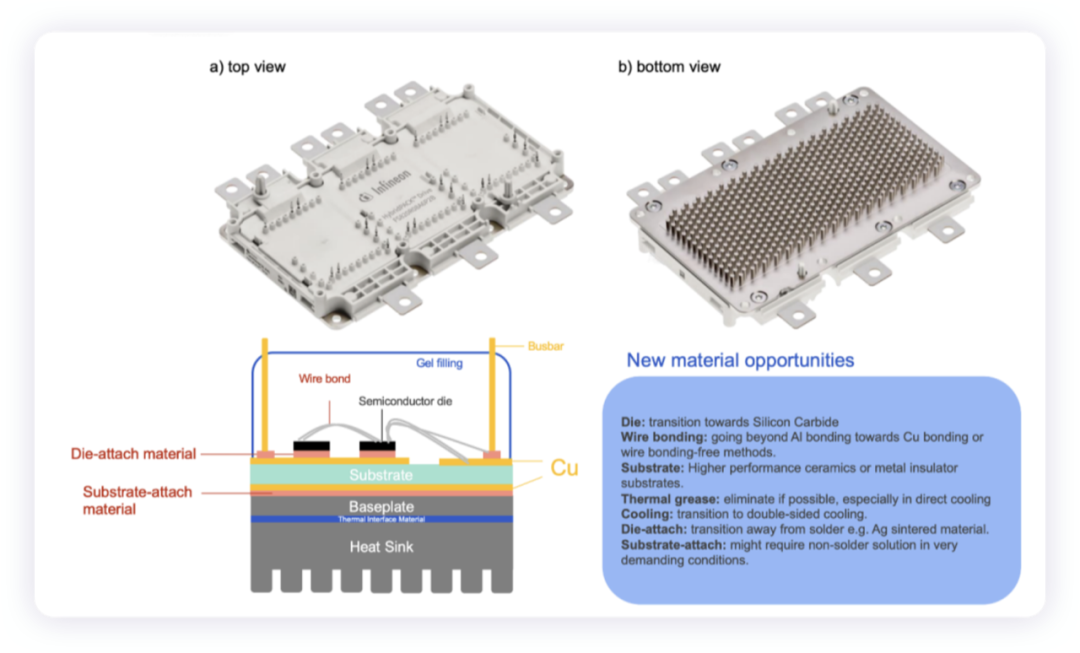
- The HP1 module is mainly used for low-power vehicles, adopting a flat water-cooled structure and fewer chip connections, with a peak power of only 70-80kW.
- The HPD module can parallel more chips, has a higher output power, and better heat dissipation. The module satisfies the needs of mainstream applications, ranging from 150kW to 180kW, and has already been adopted by most downstream customers for the development of electrical control and drive systems using HPD.
In the development of SiC, new technological iterations will emerge. Infineon’s design for HPD module-compatible sizes is not the best strategy. Currently, Tier 1 automotive parts suppliers and OEM automakers have begun to participate deeply in the design and manufacturing of power modules. SiC power module packaging is an opportunity for system and automotive manufacturers to control upstream processes.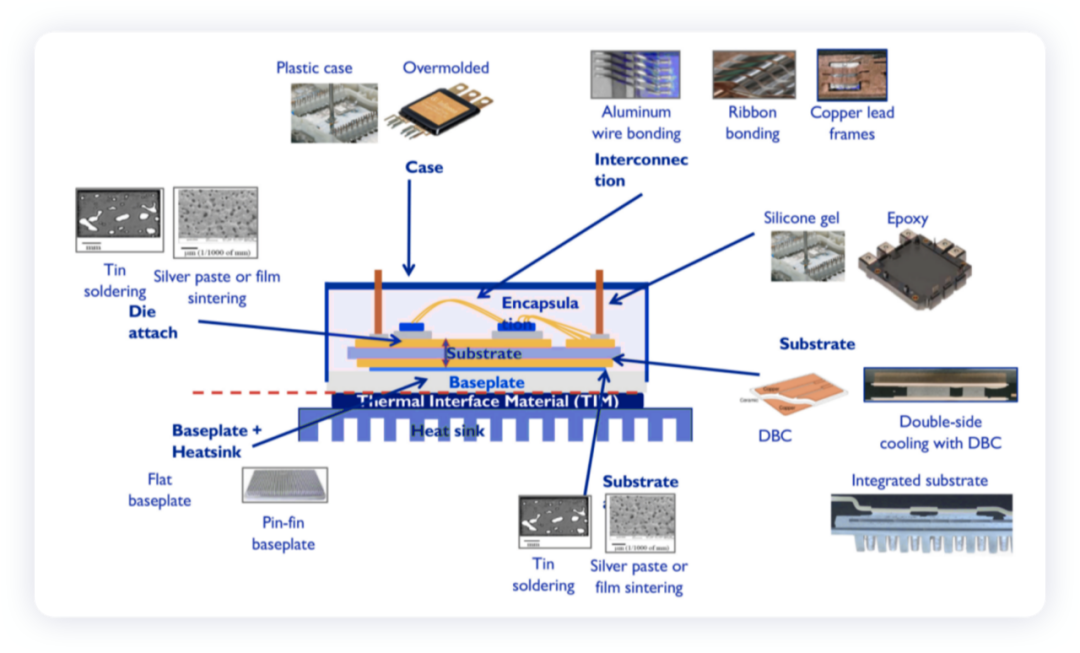
Currently, the specific production process of Infineon is unknown. However, we have seen that the whole process of SiC production is very sensitive. With the adoption of relatively mature processes, Infineon’s power module packaging technology is relatively mature. For automobile companies, designing new SiC packaging is not only about wire bonding, welding and packaging, but also requires strong requirements for power density, performance and reliability. Around these factors such as temperature resistance, reliability, parasitic inductance, thermal resistance, and cost, many system solutions can be combined.
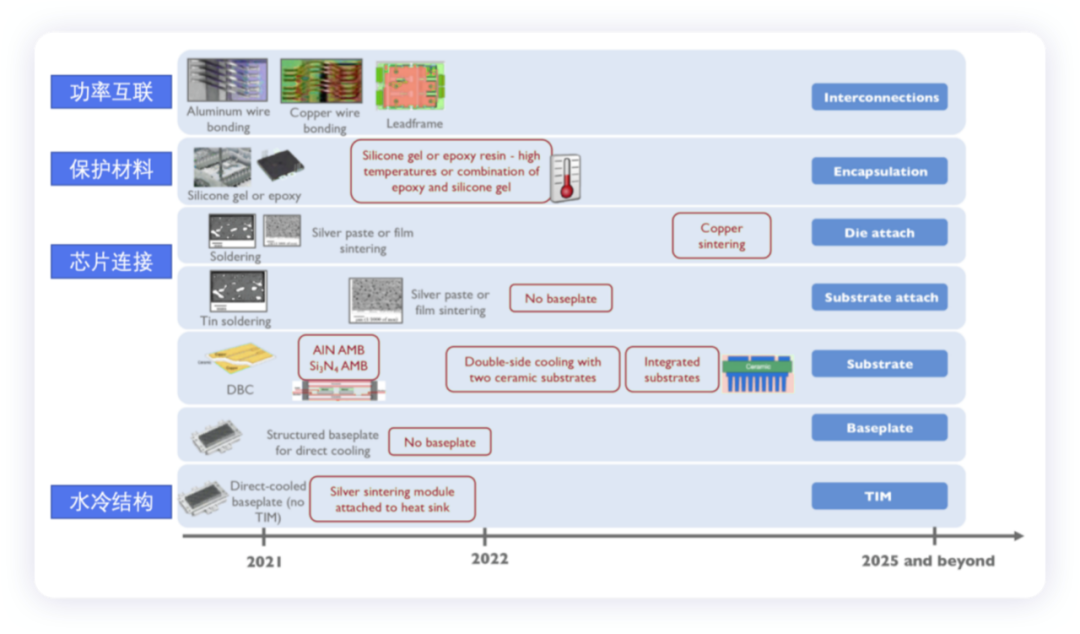
From a design perspective, the future evolution direction can be the use of modules with double-sided cooling and encapsulation technology, which can greatly improve power density, performance and reliability.
Summary: I believe that this event may represent a core issue- the stable output of SiC has a high threshold. This makes it difficult for 800V applications to speed up. Currently, there are some restrictions on the volume of several vehicles under the 800V of Modern Kia Group, including Ioniq5 and subsequent models such as EV6. Tesla has come so far in this regard, and it is indeed the most important to lock in two core partners, Cree and ST.
This article is a translation by ChatGPT of a Chinese report from 42HOW. If you have any questions about it, please email bd@42how.com.
